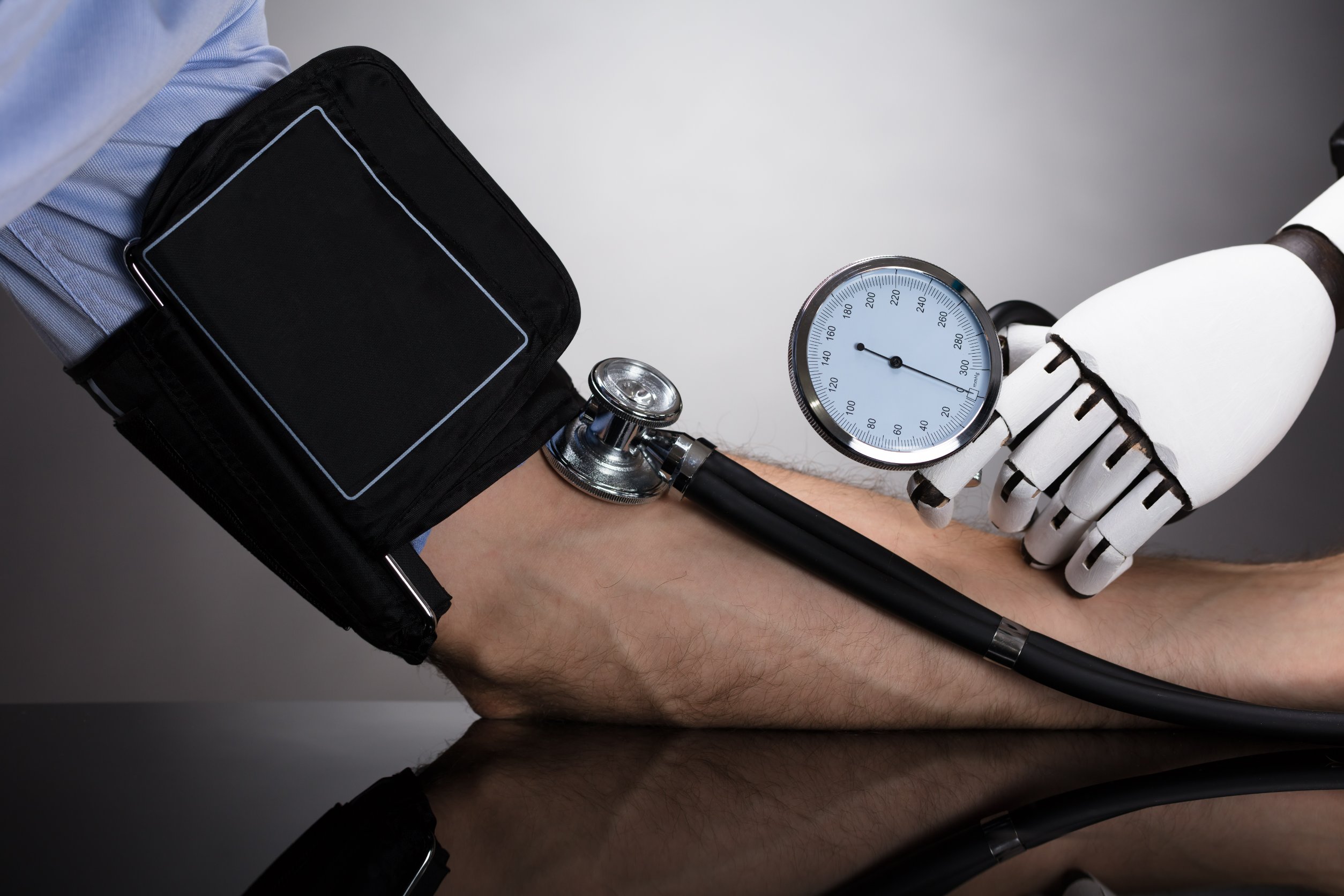ตลาดการดูแลสุขภาพของไทยมีแนวโน้มดีวันดีคืน โดยคาดว่าการใช้จ่ายเพื่อดูแลสุขภาพในประเทศจะสูงถึง 24.6 พันล้านดอลลาร์ในปี 2023 คิดเป็น 4.0% ของ GDP โดยมี CAGR อยู่ที่ 5.4% ระหว่างปี 2021 ถึง 2023 เป็นการเติบโตทั้งในตลาดการดูแลสุขภาพและอุปกรณ์การแพทย์ตามข้อมูลของ KPMG ค่าใช้จ่ายด้านการรักษาพยาบาลที่เพิ่มขึ้นเป็นผลมาจากประชากรสูงอายุ โดย ผู้สูงอายุส่วนใหญ่มักตรวจพบว่าเป็นโรคไม่ติดต่อเรื้อรังอย่างน้อยหนึ่งชนิด เกือบครึ่งหนึ่งเป็นโรคความดันโลหิตสูง รองลงมาคือโรคเบาหวาน โรคหัวใจ โรคหลอดเลือดสมอง และมะเร็ง สิ่งเหล่านี้นำไปสู่ความต้องการอุปกรณ์ทางการแพทย์ที่ทันสมัยและไฮเทค โดยเฉพาะอย่างยิ่งเป็นความต้องการเพื่อการวินิจฉัยโรค

Source: Bolliger and Company (Thailand)
บริการทางการแพทย์ของไทยทำรายได้ต่อปีสูงอยู่ในอันดับต้น ๆ ของอาเซียน อยู่ที่ 4.5 พันล้านดอลลาร์สหรัฐ และมีผู้ป่วยชาวต่างชาติ 2.8 พันล้านคนเข้ามารับการรักษาพยาบาลในประเทศไทยไทยเป็นผู้นำเข้าและส่งออกเครื่องมือแพทย์รายใหญ่ที่สุดในอาเซียน รายงานที่เผยแพร่โดย KPMG คาดว่าตลาดอุปกรณ์ทางการแพทย์ในประเทศจะมีมูลค่า 2 หมื่นล้านเหรียญสหรัฐในปี 2022 โดยมีอัตราการเติบโตเฉลี่ยต่อปี 7.5% ระหว่างปี 2561 ถึง 2565 ตามตัวเลขการรายงานของ Fitch Solutions แล้วพบว่า ผู้ผลิตในไทยส่วนใหญ่ (43%) ผลิตอุปกรณ์แบบใช้ครั้งเดียวทิ้ง รองลงมาคืออุปกรณ์ที่ทนทาน (28%) บริการสนับสนุน (6%) น้ำยาและชุดทดสอบ (6%) และอื่นๆ (11%)

Source: Thailand Pharmaceuticals and Healthcare Report 2021, Fitch Solutions
ตลาดอุปกรณ์การแพทย์ของโลกมีขนาดอยู่ที่ประมาณ 532.62 พันล้านดอลลาร์สหรัฐในปี 2021 และคาดว่าการเติบโต CAGR จะอยู่ที่ 5.5% ระหว่างปี 2022 – 2027 การระบาดของโควิด-19 ส่งผลกระทบอย่างคาดไม่ถึงต่อตลาด ในปัจจุบันประเทศต่าง ๆ ยังคงเผชิญกับภัยคุกคามนี้อย่างต่อเนื่อง บริษัทเภสัชกรรมและเทคโนโลยีชีวภาพส่วนใหญ่มุ่งเน้นการวิจัยและพัฒนาเพื่อสร้างยาชนิดใหม่ที่นำไปสู่การรักษาโรค การชะงักงันของห่วงโซ่อุปทานที่เกิดจากการระบาดนี้ ยังทำให้เกิดการขาดแคลนอุปกรณ์ทางการแพทย์เป็นอย่างมากไปทั่วโลก

Source: Mordor Intelligence
ตลาดเครื่องมือแพทย์ของไทยในปี 2021 มีมูลค่าอยู่ที่ประมาณ 6 พันล้านดอลลาร์สหรัฐ เพื่อที่จจะรับมือกับการระบาด COVID-19 ผู้ผลิตภายในประเทศได้เพิ่มอัตราการผลิตอุปกรณ์ป้องกัน (PPE) ทำให้การส่งออกอุปกรณ์เครื่องมือแพทย์ของไทยเพิ่มขึ้นถึง 22% จากปีก่อนก็อันเนื่องมากจากไทยเป็นผู้ผลิตและส่งออก PPE ที่สำคัญอย่างเช่นถุงมือผ่าตัดไนไตรล์และหน้ากากผ่าตัด ในเดือน เมษายน 2021 ที่ผ่านมา สำนักงานคณะกรรมการอาหารและยา (อย.) ของไทยได้ออกข้อบังคับเครื่องมือแพทย์ฉบับใหม่เพื่อให้สอดคล้องกับระบบการกำกับดูแลของ ASEAN Medical Device Directive (AMDD) ข้อบังคับใหม่กำหนดให้ต้องมีข้อมูลทางเทคนิคสำหรับอุปกรณ์ทางการแพทย์ทั้งหมด โดยจะต้องส่งข้อมูลนี้ตามรูปแบบเทมเพลตเอกสารตามข้อตกลงร่วมกันภายในกลุ่มอาเซียน
ด้วยโครงสร้างพื้นฐานทางสาธารณะสุขที่แข็งแกร่ง ผู้เชี่ยวชาญทางการแพทย์ที่มีทักษะสูง บริการทางการแพทย์ที่มีมาตรฐานสากล และค่ารักษาพยาบาลที่ไม่แพง จึงทำให้ประเทศไทยจึงเป็นศูนย์กลางการท่องเที่ยวเชิงการแพทย์ระดับโลก ในปี 2019 มีนักท่องเที่ยวทางการแพทย์ประมาณ 3.5 ล้านคนมาเยือนประเทศไทย และในเดือนมิถุนายน 2022 ที่ผ่าน สถาบัน Joint Commission International (JCI) ได้รับรองสถานพยาบาลไทย 62 แห่งที่ให้บริการการรักษาพยาบาลอันหลากหลายตั้งแต่การปลูกถ่ายอวัยวะไปจนถึงทันตกรรมและศัลยกรรมความงาม ปัจจุบันประเทศไทยมีสถานพยาบาลมากกว่า 38,512 แห่ง นับเป็น คลินิกเอกชน 24,800 แห่ง (64%), ศูนย์ส่งเสริมสุขภาพและส่งเสริมสุขภาพอำเภอ 9,800 แห่ง (25%), โรงพยาบาลเอกชน 370 แห่ง (2%) ซึ่งมากกว่า 1 ใน 3 ในจำนวนนี้อยู่ในเขตกรุงเทพฯ, และโรงพยาบาลของรัฐ 294 แห่ง (1%)

Source: Medical Tourism Index (MTI)
ตัวเลขจำนวนผู้ป่วยต่างชาติที่เดินทางมาเพื่อรับการรักษาในประเทศไทยที่ดีดตัวสูงขึ้นนี้เป็นเพราะความสามารถในการให้การดูแลและบริการคุณภาพสูงที่โรงพยาบาลในประเทศ โรงพยาบาลเอกชนหลายแห่งวางแผนเปิดบริการรักษาโรคที่มีความซับซ้อนมากขึ้น เพื่อตอบสนองความต้องการที่เพิ่มขึ้นของผู้ป่วยทั้งในและต่างประเทศ โรงพยาบาลที่ขนาดใหญ่หลายแห่งกำลังขยับขยายสถานที่และเปิดสาขาใหม่ ตัวอย่างเช่น โรงพยาบาลกรุงเทพวางแผนที่จะเพิ่มเครือข่ายจาก 49 แห่งเป็น 50 แห่งภายในปี 2023 และขยายกำลังการผลิตอีก 172 เตียง โดยมุ่งเน้นที่การรักษาเฉพาะทางสำหรับความผิดปกติทางระบบประสาทและภาวะกระดูกและข้อ โรงพยาบาลบำรุงราษฎร์มีแผนที่จะเปิดวิทยาเขตเพชรบุรีอีก 202 เตียง ในขณะที่โรงพยาบาลเกษมราษฎร์เพิ่งจะเปิดสาขาใหม่ในจังหวัดอรัญประเทศเมื่อปี 2020 ที่ผ่านมา
ตลาดอุปกรณ์ทางการแพทย์ที่มีขนาดใหญ่ การเข้าถึงบริการด้านสุขภาพทั่วประเทศ และสภาพแวดล้อมด้านกฎระเบียบที่เป็นมิตรกับต่างประเทศ ปัจจัยแวดล้อมเหล่านี้ทำให้ประเทศไทยกลายเป็นตลาดแห่งโอกาสอันยอดเยี่ยมสำหรับบริษัททางการแพทย์ที่ต้องการเข้าสู่ตลาดเอเชีย กระนั้นก็ตามการสร้างและพลักดันภาคอุตสาหกรรมการดูแลสุขภาพให้ได้รับการยอมรับในระดับโลกนั้นก็ยังสำคัญอยู่ และคาดว่าภาคอุตสาหกรรมการดูแลสุขภาพจะเกิดความก้าวหน้าและเติบโตอย่างมากในอีกไม่กี่ปีข้างหน้า ประชากรสูงอายุ จำนวนโรงพยาบาลและคลินิกที่เพิ่มขึ้น งบประมาณค่าใช้จ่ายด้านการรักษาพยาบาลของรัฐบาลที่เพิ่มขึ้น และความนิยมที่ในฐานะที่จุดหมายปลายทางยอดนิยมของนักท่องเที่ยวด้านการแพทย์จะส่งผลกระทบต่อความต้องการและตลาดในเชิงบวกเป็นอันมากเช่นเดียวกัน
Article by: Asst. Prof. Suwan Juntiwasarakij, Ph.D. & MEGA Tech












